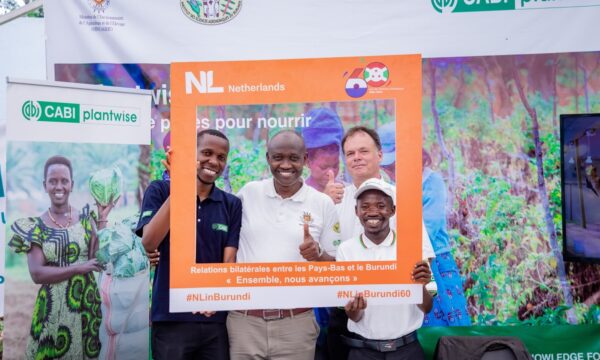
As we get stuck into the New Year and look forward to all that 2012 has to offer, it seems an ideal time to take stock of all that Plantwise achieved in 2011. So, here are some of our highlights!
![]() Donors pledge $28 million to the Plantwise initiative
Donors pledge $28 million to the Plantwise initiative
The Swiss Agency for Development and Cooperation (SDC) and the UK Department for International Development (DFID) are among those to give their show of confidence in CABI and its Plantwise initiative. Initial funding commitments to date have reached $28 million, which will fund the network of plant clinics and the central knowledge bank, connecting farmers, advisory services, input suppliers, research and regulation. You can read more about some of the funding and the Plantwise project here.
![]() 182 Plantwise Clinics now set up in 15 different countries
182 Plantwise Clinics now set up in 15 different countries
2011 saw Plantwise clinics initiated in Pakistan, Peru, Rwanda and Suriname, and more were opened in Kenya, Sierra Leone and Uganda, where plant clinics have already proven to be a success. Plantwise clinics have also been piloted in Grenada ready for 2012. You can read more about the clinics here or watch a video about the Kenya clinics here.
![]() Plantwise knowledge bank launched in June, 2011
Plantwise knowledge bank launched in June, 2011
The prototype knowledge bank was launched to set up a central source of up-to-date and scientifically-based information. In 2011, over 550 factsheets and 3400 data sheets were added. Users from over 150 countries have been recorded visiting the site, with many developing countries present in the top 20. The knowledge bank allows simple searches to find information on identifying, treating, and managing pests and diseases: to have a go at diagnosing a pest, click here.
![]() Plantwise launch the knowledge bank map
Plantwise launch the knowledge bank map
Plantwise has created the world’s most comprehensive distribution data source for pests and diseases. The first of its kind, the Plantwise interactive map links information from a variety of sources. This enables governments, researchers, farmers, clinic staff and many more to access the latest pest and disease information. Other data, such as climate zones or soil types, can be viewed against pest distribution, too.
You can find out more and view a video demonstration of the knowledge bank including the map, here.
![]() New plant doctors trained
New plant doctors trained
In 2011, training courses were run in Cambodia, Suriname, India and Grenada (also with participants from Barbados and Trinidad). You can read more about some of the Plant Doctor training that took place in our news or blog pages.
![]() Plantwise blog reaches 100th post!
Plantwise blog reaches 100th post!
After being set up in late 2010 the Plantwise blog has continued to grow, with more and more readers being gripped by our stories every week! December 2011 saw us reach the milestone of our 100th blog post, so to celebrate here are some of our most read blog stories from last year:
The life and travels of Tuta absoluta, the tomato leaf miner by Katherine Cameron
How plant diseases attract plant pests by Abigail Rumsey
Predicting the effects of global warming on insects by Vera Barbosa
Cassava – another superhero unmasked? by Claire Shepherd
Cucumber Mosaic Virus Stopped by Slicing by Steven Forrest

The Plantwise team is still actively working to continue to improve the lives of farmers, so here’s a taster of what to look out for in 2012!
New Plantwise clinics will be opening, with plans to expand into Tanzania, Ghana and Honduras, and with this more plant doctors will be trained. The Plantwise map will be showing off its new and improved model, and will soon allow for searches on multiple species.
More factsheets are already being uploaded onto the knowledge bank, too. Connecting these is work on developing the Plant Health Systems, integrating and facilitating links between clinics, diagnostic labs, research and extension.
2012 looks set to be just as busy as last year, but you can keep up to date with all your Plantwise news here on the blog or on our website.
Related News & Blogs
How does crop rotation help keep pest populations in control?
Crop rotation is a simple, effective way to manage pests, improve soil health, and boost yields. Suitable for all growers, crop rotation supports sustainable agriculture and reduces the need for chemical inputs. By targeting pest lifecycles and reducin…
6 June 2025




